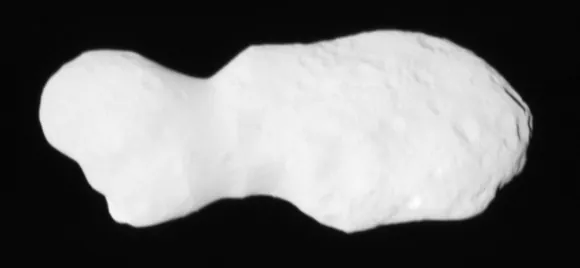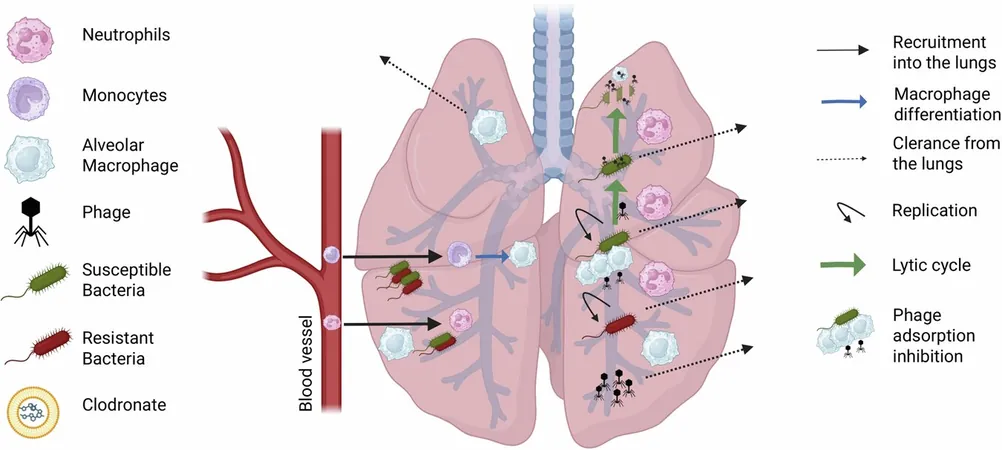
Revolutionary Breakthrough: Researchers Create 'First Realistic' Photonic Time Crystals to Transform Light Technology
2024-11-13
Author: John Tan
Introduction
In a groundbreaking achievement, an international team of researchers has unveiled the first realistic photonic time crystals, materials capable of exponentially amplifying light like never before. This innovation promises to revolutionize various sectors, including telecommunications, imaging, and sensing technologies, paving the way for faster and more compact lasers and sensors.
Significance of the Research
Viktar Asadchy, an Assistant Professor at Aalto University in Finland, remarked on the significance of this research: 'This work could lead to the first experimental realization of photonic time crystals, which can propel them into practical applications. This could transform industries by enabling high-efficiency light amplifiers, advanced sensors, and innovative laser technologies, pushing the limits of light-matter interactions.'
What are Photonic Time Crystals?
The findings, published in the prestigious journal *Nature Photonics*, introduce photonic time crystals as a unique class of optical materials. Unlike traditional crystals that feature spatially repeating structures, photonic time crystals maintain uniformity in space but exhibit a striking periodic oscillation in time. This distinctive characteristic allows for the creation of momentum band gaps—rare states where light pauses within the crystal while its intensity skyrockets exponentially.
Understanding Light Interaction in Photonic Time Crystals
To grasp the extraordinary nature of light interaction in photonic time crystals, the researchers likened it to light moving through a medium that alternates between air and water at an astonishing quadrillion times per second. This phenomenon radically challenges our conventional optics understanding.
Applications in Nanosensing
One of the most promising applications of these photonic time crystals lies in nanosensing. Asadchy explained, 'Imagine detecting tiny particles such as viruses, pollutants, or cancer biomarkers. When activated, these particles emit minuscule amounts of light at specific wavelengths. A photonic time crystal can capture and automatically amplify this light, enhancing detection efficiency with existing technologies.'
Challenges in Creating Photonic Time Crystals
Creating photonic time crystals for visible light has historically been a daunting challenge due to the need for rapid and substantial variations in material properties. Previous experimental efforts have only been able to demonstrate photonic time crystals at lower frequencies like microwaves.
Innovative Approach Proposed
However, with their new theoretical models and electromagnetic simulations, the research team has proposed an innovative approach to achieve what they describe as 'truly optical' photonic time crystals. By utilizing an array of intricate silicon spheres, they predict that the previously unattainable conditions for light amplification can finally be realized in laboratory settings using familiar optical techniques.
Collaborative Effort and Future Implications
This collaborative effort includes esteemed researchers from Aalto University, the University of Eastern Finland, Karlsruhe Institute of Technology in Germany, and Harbin Engineering University in China. As the field advances, the potential for such technology continues to grow, hinting at a future where light manipulation reaches new heights, ultimately transforming various technological landscapes.
Conclusion
Stay tuned to see how this development might influence everything from high-speed communication systems to breakthrough medical diagnostics!




 Brasil (PT)
Brasil (PT)
 Canada (EN)
Canada (EN)
 Chile (ES)
Chile (ES)
 Česko (CS)
Česko (CS)
 대한민국 (KO)
대한민국 (KO)
 España (ES)
España (ES)
 France (FR)
France (FR)
 Hong Kong (EN)
Hong Kong (EN)
 Italia (IT)
Italia (IT)
 日本 (JA)
日本 (JA)
 Magyarország (HU)
Magyarország (HU)
 Norge (NO)
Norge (NO)
 Polska (PL)
Polska (PL)
 Schweiz (DE)
Schweiz (DE)
 Singapore (EN)
Singapore (EN)
 Sverige (SV)
Sverige (SV)
 Suomi (FI)
Suomi (FI)
 Türkiye (TR)
Türkiye (TR)
 الإمارات العربية المتحدة (AR)
الإمارات العربية المتحدة (AR)